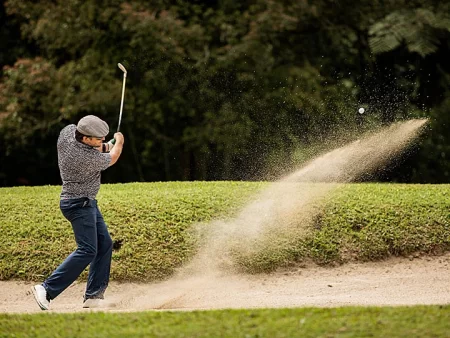 Golf is a low-impact sport, but injuries still occur. Many of these occur from poor mechanics or overuse, especially when your lower back is involved. Other common areas for golf injuries include your elbow, wrist, hand, and shoulder. Avoiding such injuries requires proper mechanics, but rolfing is there when these injuries are unavoidable.
Golf is a low-impact sport, but injuries still occur. Many of these occur from poor mechanics or overuse, especially when your lower back is involved. Other common areas for golf injuries include your elbow, wrist, hand, and shoulder. Avoiding such injuries requires proper mechanics, but rolfing is there when these injuries are unavoidable.
Tips to Help You Avoid Golf Injuries
There are many ways to avoid golf injuries while you’re on the course. Before you start your next round, you should take some time to look at these tips so you won’t be off the course getting rolfing treatments.
Adjust Your Swing
One of the most common golf injuries that result in the need for a rolfing session occurs when you don’t correctly execute your golf swing. Remember to engage your whole body when executing your swing. Repeatedly executing a swing incorrectly will place significant stress on the wrong parts of your body.
When it comes to your swing, you always want to use proper posture. Stand with your feet shoulder-length apart, slightly rotated outwards. Keep your knees slightly bent and your spine relatively straight. Bend slightly forward and swing from your hips.
Never hunch over the ball, or this may result in neck and back strain. You also don’t want to swing the club too hard or too fast, or you’ll place stress on your joints.
Your goal is to maintain a nice, smooth swing on the ball. Doing so requires all of your muscle groups to work together. These are things that expert golfers have learned are more important than speed.
Always Warm Up First
Before you head out onto the course to play a round of golf, make sure you warm up correctly, so you don’t need rolfing. Take a brisk, 10-minute walk, stretch your body, and take a few swings with your club. It only takes a few minutes to avoid months of recovery from an injury.
Start Your Game Slowly
It doesn’t matter how much you practice your swing. If your body isn’t conditioned correctly, you’re causing more harm than good. Instead of rushing things, take time to work up to your desired activity level. Make sure you always focus on proper form.
Build up Your Endurance
It’s essential to engage in regular aerobic activity when not on the golf course. You should get anywhere from 75 – 150 minutes of aerobic activity each week. Some of the best exercises for this include walking, jogging, bicycling, and swimming.
Strengthen Your Muscles
Hitting a long drive has nothing to do with having bulging muscles. However, the stronger your muscles are, the faster you’ll be able to swing your club. You’ll also be less likely to need rolfing because you won’t get injured so easily. This is why it’s recommended that you engage in strength training exercises throughout the year.
Protect Your Feet
While you want to wear shoes that have short cleats, you also want to make sure they’re comfortable since you’ll be on your feet for a lengthy amount of time. Choosing the wrong shoes (those with long cleats) will dig into the sod and hold your feet so that your knees experience more strain.
You also want to make sure to keep your feet inside the golf cart while riding in one. Some golfers have broken their ankles because they’ve become entangled in the golf cart’s moving parts.
Play Smart
It doesn’t matter if you’re a new golfer or someone who has had a lifelong passion. You need to protect yourself from golf injuries. Unfortunately, they may still occur. When they do, contact us at Williams Rolfing in Tampa, FL. We’ll help you get back on the course right away.
Picture Credit: Freepik
